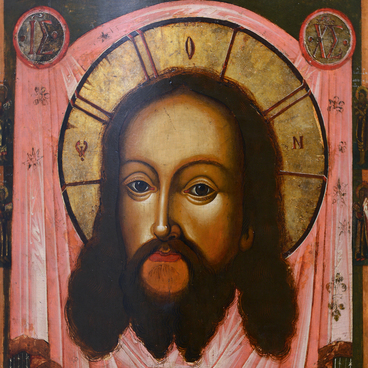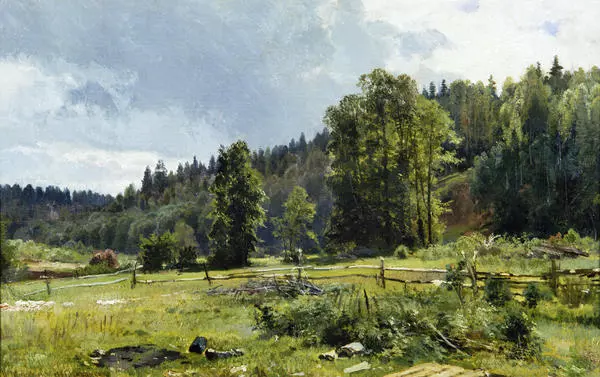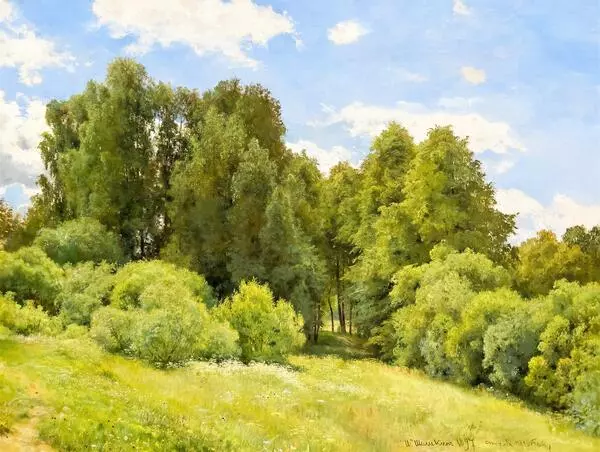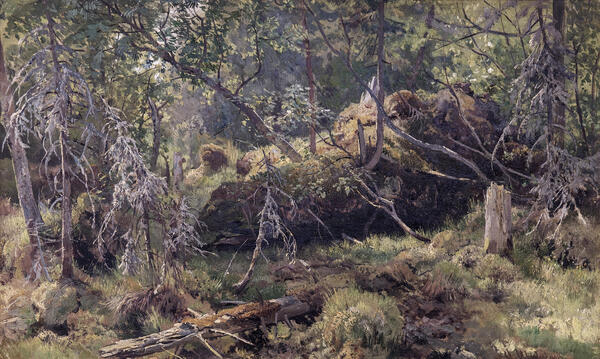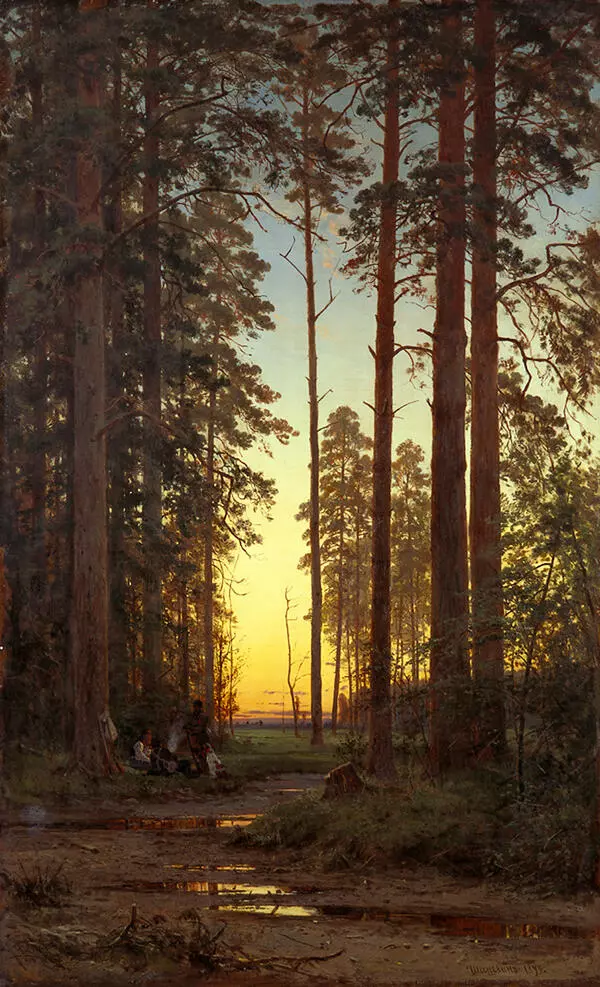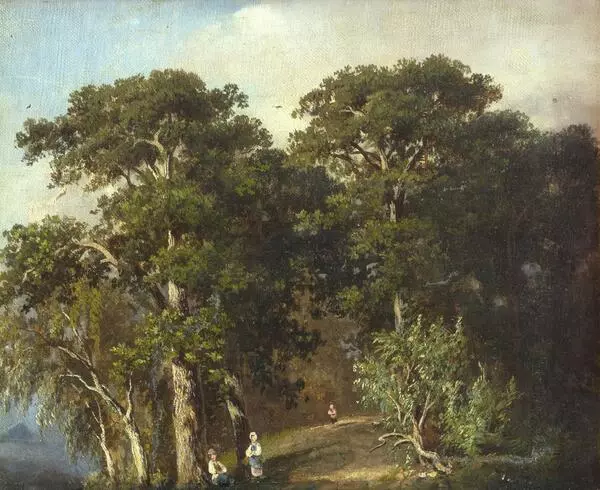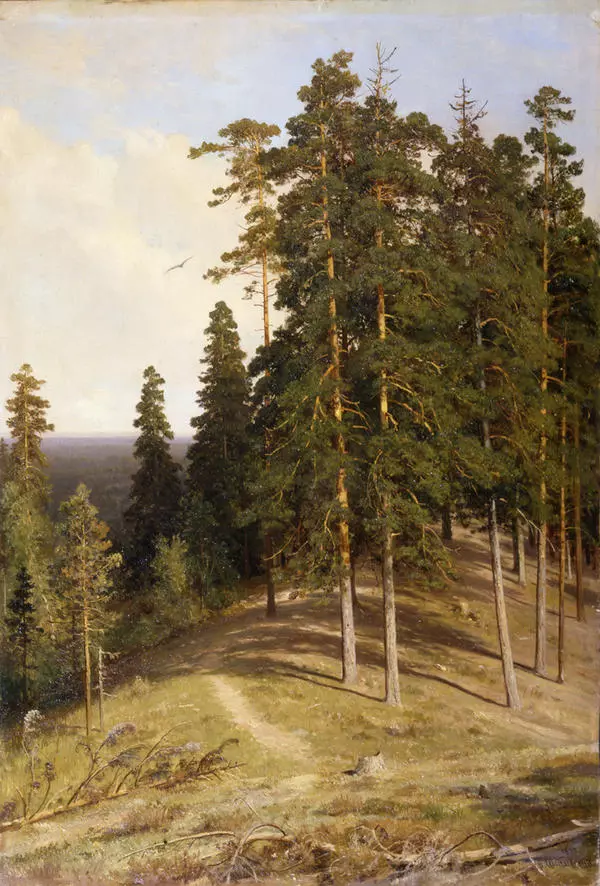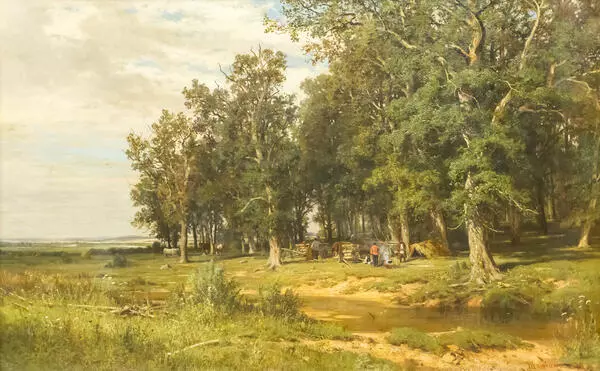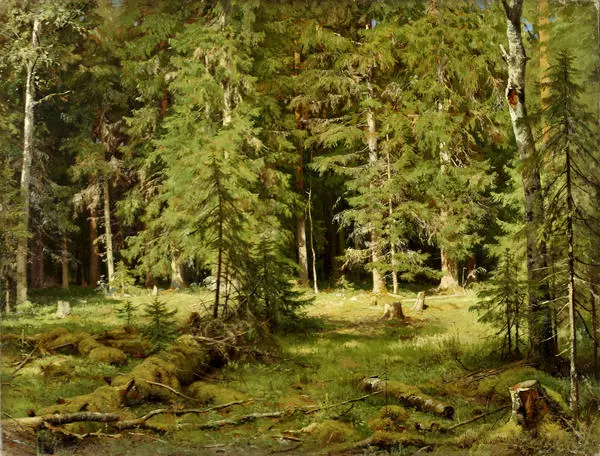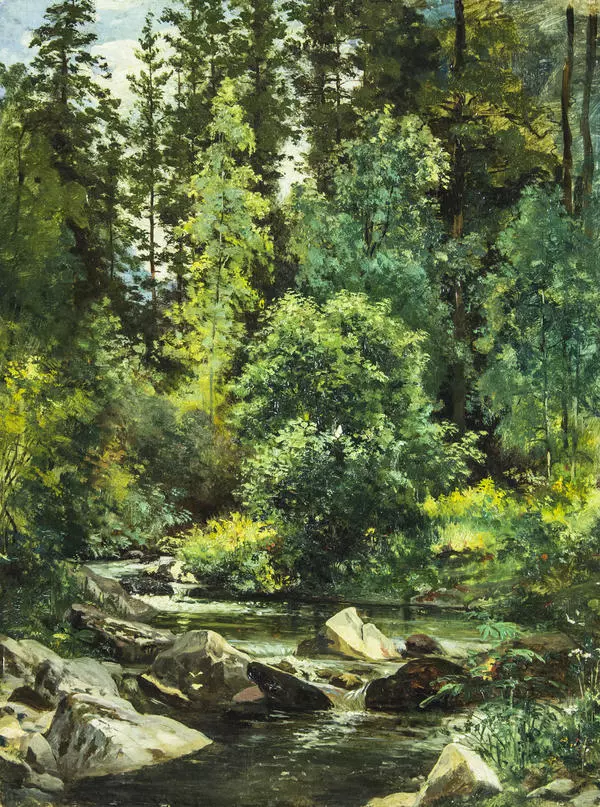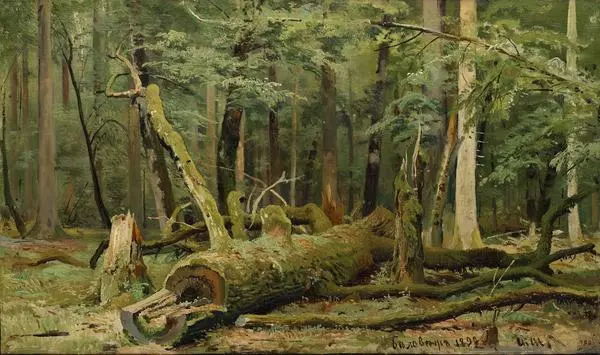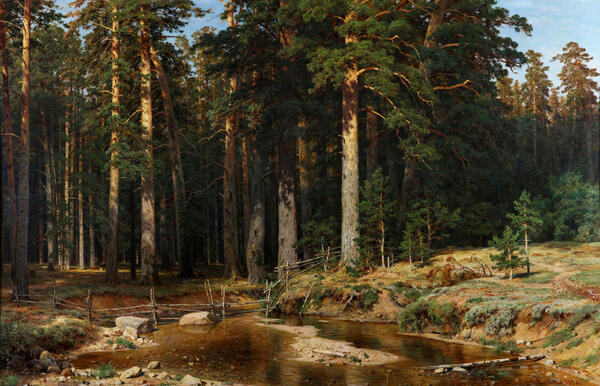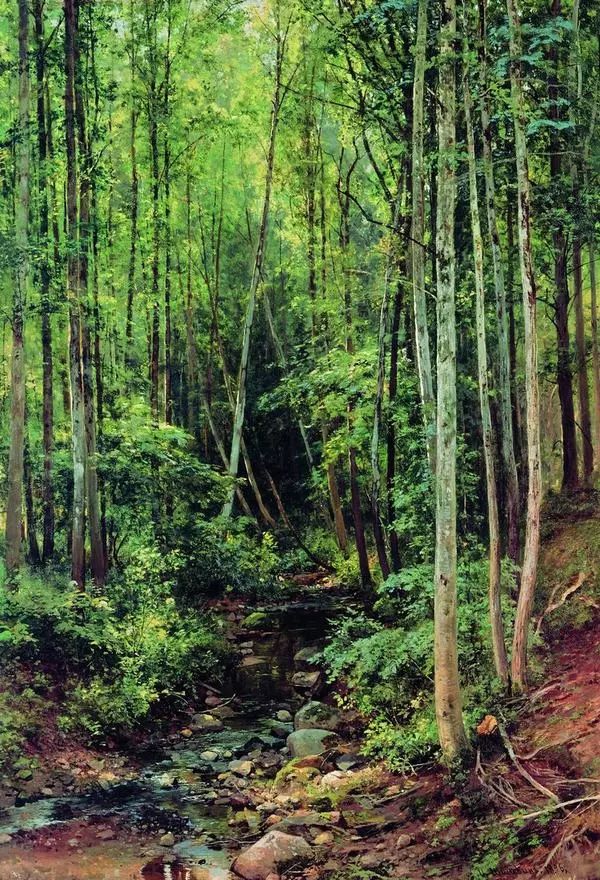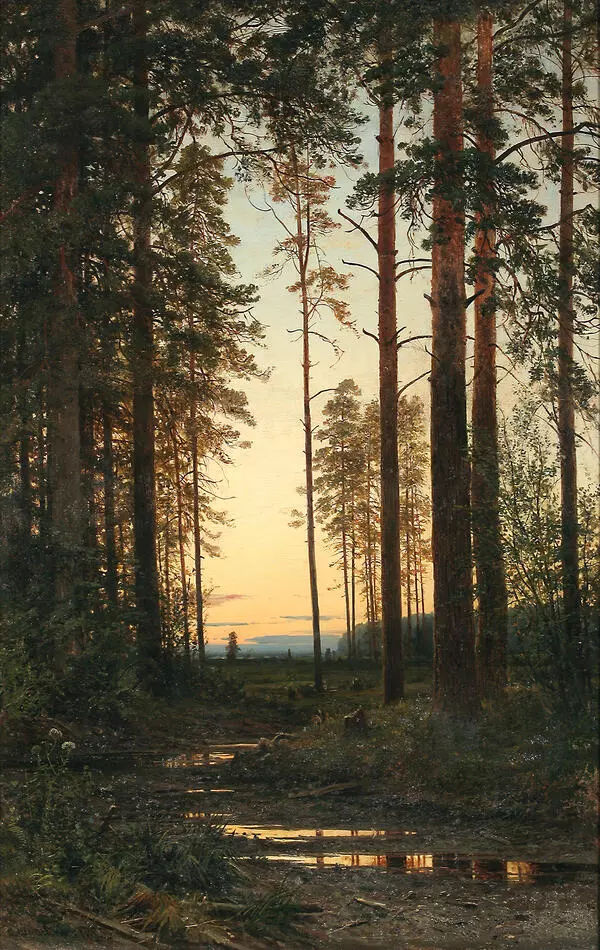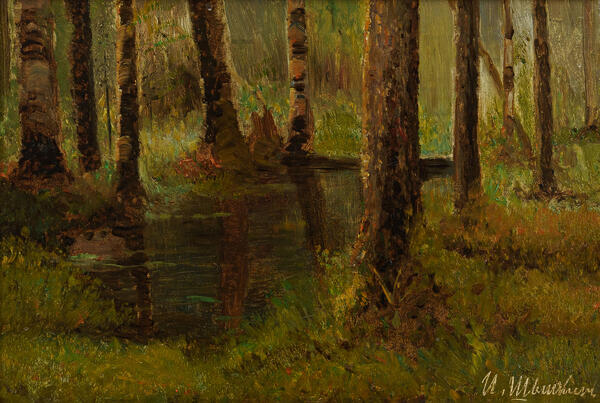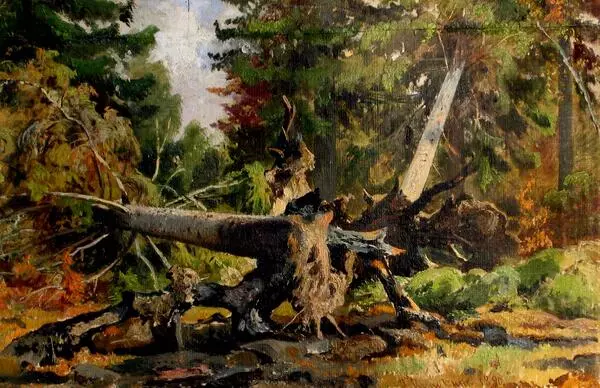For most people, a realistic painting of a forest is the first thing to come to mind when thinking about IvAn ShishkIn. Most of his works are characterized by precise painting and epic scope. Shishkin’s painting method was mainly based on doing study drawings. In order to study nature, the artist made annual summer trips to ValaAm Island and his native town of YelAbuga.
“Pine forest” was created in Schmetzk, a village trendy among residents of Saint Petersburg, located not far from the city of NArva. It was described in “The Improvisors”, a short story by Nikolai Leskov. Shishkin was attracted by a dense German forest, separated by a highway from a long row of summer houses on the bank.
The painting combines a quick study-like drawing manner with a thought-out composition. All in all, “Pine forest” is a very realistic-looking painting. This is one of those Shishkin’s works that can be used to study the structure of trees and plants.
He always strived for a convincing and complete image. When looking at the painting it seems as if the scenery was close to the viewer. Shishkin achieved this effect using a frame that slices off the treetops. With such a frame, the artist emphasizes the height and slenderness of pine trees. At the same time, it helps to direct the viewer’s gaze in the right direction.
The artist draws attention to the forest corner, which begins at the very edge of the canvas. Gradually, the viewer’s gaze is guided further, following the path and turning around the painting’s foreground. This study drawing reflects Shishkin’s inherent ability to have a lofty dialogue with his viewers. The artist believed that the viewers should be in no hurry when looking at the painting and take their time to study it.
At the same time, Shishkin’s study drawings fully reflected realistic principles of the new Russian landscape painting of the second half of the 19th century. The artist acts as a life scientist, explorer and naturalist, who seeks to reproduce the objective aspects of natural life. Shishkin’s study drawings are far from the idealized images we see in academic and romantic landscape painting. It is about the first-hand experience of communicating with nature.
“Pine forest” was created in Schmetzk, a village trendy among residents of Saint Petersburg, located not far from the city of NArva. It was described in “The Improvisors”, a short story by Nikolai Leskov. Shishkin was attracted by a dense German forest, separated by a highway from a long row of summer houses on the bank.
The painting combines a quick study-like drawing manner with a thought-out composition. All in all, “Pine forest” is a very realistic-looking painting. This is one of those Shishkin’s works that can be used to study the structure of trees and plants.
He always strived for a convincing and complete image. When looking at the painting it seems as if the scenery was close to the viewer. Shishkin achieved this effect using a frame that slices off the treetops. With such a frame, the artist emphasizes the height and slenderness of pine trees. At the same time, it helps to direct the viewer’s gaze in the right direction.
The artist draws attention to the forest corner, which begins at the very edge of the canvas. Gradually, the viewer’s gaze is guided further, following the path and turning around the painting’s foreground. This study drawing reflects Shishkin’s inherent ability to have a lofty dialogue with his viewers. The artist believed that the viewers should be in no hurry when looking at the painting and take their time to study it.
At the same time, Shishkin’s study drawings fully reflected realistic principles of the new Russian landscape painting of the second half of the 19th century. The artist acts as a life scientist, explorer and naturalist, who seeks to reproduce the objective aspects of natural life. Shishkin’s study drawings are far from the idealized images we see in academic and romantic landscape painting. It is about the first-hand experience of communicating with nature.
